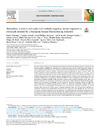Please use this identifier to cite or link to this item:
https://accedacris.ulpgc.es/jspui/handle/10553/76422
| Title: | Biomarkers, matrices and analytical methods targeting human exposure to chemicals selected for a European human biomonitoring initiative | Authors: | Vorkamp, Katrin Castaño, Argelia Antignac, Jean Philippe Domínguez Boada, Luis María Cequier, Enrique Covaci, Adrian Esteban López, Marta Haug, Line S. Kasper-Sonnenberg, Monika Koch, Holger M. Pérez Luzardo, Octavio Luis Osīte, Agnese Rambaud, Loïc Pinorini, Maria Teresa Sabbioni, Gabriele Thomsen, Cathrine |
UNESCO Clasification: | 3214 Toxicología | Keywords: | Bisphenols Flame Retardants HBM4EU Metals Per- And Polyfluoroalkyl Substances, et al |
Issue Date: | 2021 | Journal: | Environment International | Abstract: | The major purpose of human biomonitoring is the mapping and assessment of human exposure to chemicals. The European initiative HBM4EU has prioritized seven substance groups and two metals relevant for human exposure: Phthalates and substitutes (1,2-cyclohexane dicarboxylic acid diisononyl ester, DINCH), bisphenols, per- and polyfluoroalkyl substances (PFASs), halogenated and organophosphorous flame retardants (HFRs and OPFRs), polycyclic aromatic hydrocarbons (PAHs), arylamines, cadmium and chromium. As a first step towards comparable European-wide data, the most suitable biomarkers, human matrices and analytical methods for each substance group or metal were selected from the scientific literature, based on a set of selection criteria. The biomarkers included parent compounds of PFASs and HFRs in serum, of bisphenols and arylamines in urine, metabolites of phthalates, DINCH, OPFRs and PAHs in urine as well as metals in blood and urine, with a preference to measure Cr in erythrocytes representing Cr (VI) exposure. High performance liquid chromatography-tandem mass spectrometry (LC-MS/MS) was the method of choice for bisphenols, PFASs, the HFR hexabromocyclododecane (HBCDD), phenolic HFRs as well as the metabolites of phthalates, DINCH, OPFRs and PAHs in urine. Gas chromatographic (GC) methods were selected for the remaining compounds, e.g. GC-low resolution MS with electron capture negative ionization (ECNI) for HFRs. Both GC–MS and LC-MS/MS were suitable for arylamines. New developments towards increased applications of GC–MS/MS may offer alternatives to GC–MS or LC-MS/MS approaches, e.g. for bisphenols. The metals were best determined by inductively coupled plasma (ICP)-MS, with the particular challenge of avoiding interferences in the Cd determination in urine. The evaluation process revealed research needs towards higher sensitivity and non-invasive sampling as well as a need for more stringent quality assurance/quality control applications and assessments. | URI: | https://accedacris.ulpgc.es/handle/10553/76422 | ISSN: | 0160-4120 | DOI: | 10.1016/j.envint.2020.106082 | Source: | Environment International [ISSN 0160-4120], v. 146, 106082, (Enero 2021) |
| Appears in Collections: | Artículos |
SCOPUSTM
Citations
106
checked on Jun 8, 2025
WEB OF SCIENCETM
Citations
98
checked on Jun 8, 2025
Page view(s)
184
checked on May 23, 2024
Download(s)
237
checked on May 23, 2024
Google ScholarTM
Check
Altmetric
Share
Export metadata
Items in accedaCRIS are protected by copyright, with all rights reserved, unless otherwise indicated.
